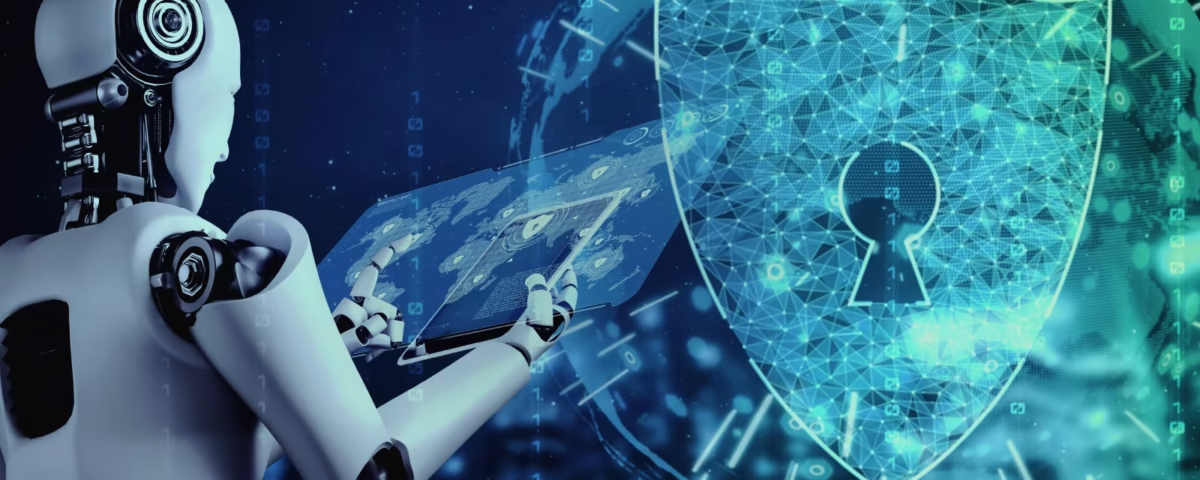
The Critical Importance of IT Security Audits for Firms
March 17, 2025
Automated vs Manual Penetration Testing: Understanding the Differences and Benefits
March 17, 2025Understanding AI’s Role in Cyber Security
The integration of artificial intelligence (AI) within cyber security has emerged as a cornerstone of modern defense strategies in the digital landscape. By employing advanced technologies such as machine learning and data analytics, organizations are better equipped to detect and respond to cyber threats efficiently. AI systems analyze vast quantities of data in real-time, identifying patterns and anomalies that may indicate potential security breaches. This capability significantly improves threat detection, allowing organizations to proactively defend against emerging cyber threats.
As we approach 2025, the role of AI in cyber security has evolved dramatically, driven by innovations in technology and an increasingly complex threat environment. AI algorithms are becoming increasingly sophisticated, leveraging deep learning and neural networks to enhance their ability to identify and predict cyber-attacks. Furthermore, automated response systems powered by AI can quickly mitigate threats, reducing the impact of security incidents and minimizing potential damage to organizations.
AI’s benefits in cyber security extend beyond threat detection and response. These technologies enable organizations to streamline their security operations through improved data analysis and reporting. By automating routine security tasks, AI allows security professionals to focus on more complex issues, ultimately reinforcing the cyber defense architecture. Additionally, AI-driven predictive analytics can assist in anticipating potential vulnerabilities and attack vectors, thereby fortifying defenses before breaches occur.
The journey toward integrating AI into cyber security protocols has been marked by significant advancements. As organizations recognize the necessity of robust security measures, the demand for AI solutions is expected to grow. In essence, artificial intelligence is not merely a tool; it is transforming the landscape of cyber security, allowing organizations to create adaptive and resilient security frameworks that can evolve in tandem with the ever-changing threat landscape.
AI as a Defender: Enhancing Threat Detection
As cyber threats evolve, so must the defense mechanisms employed to counteract them. AI has emerged as a crucial player in the field of cyber security, significantly enhancing threat detection capabilities. By leveraging advanced algorithms and machine learning techniques, AI-driven tools provide organizations with the ability to identify security threats in real-time, effectively safeguarding their digital assets.
One of the primary advantages of integrating AI in cyber security is its capacity to analyze vast amounts of data at unprecedented speeds. Traditional security systems often falter under the sheer volume of information they must process. In contrast, AI algorithms can quickly sift through extensive datasets to identify anomalies that may indicate potential threats. For instance, an AI system can continuously monitor network traffic, pinpointing irregular behaviors that deviate from established patterns, thus allowing for timely intervention.
Moreover, AI excels in pattern recognition, a vital component in detecting sophisticated threats such as advanced persistent threats (APTs) and zero-day vulnerabilities. By identifying patterns across various data points, AI can generate predictive analytics that enhances the accuracy of threat detection. This capability allows cyber security teams to shift from a reactive to a proactive stance, anticipating potential breaches before they can cause significant damage.
Several organizations have successfully employed AI-driven tools to bolster their cyber defenses. For example, a leading financial institution implemented an AI-based security system that reduced false positives during threat detection. This system employed machine learning algorithms that learned from historical data, ultimately refining its ability to differentiate between benign and harmful activities. The financial institution reported a marked improvement in their incident response times, demonstrating the real-world effectiveness of AI in cyber security.
In conclusion, leveraging AI for threat detection not only enhances the accuracy and speed of identifying cyber threats but also streamlines the response processes, protecting organizations against potential security breaches and safeguarding sensitive data.
AI as an Attacker: Understanding the Risks
The emergence of artificial intelligence (AI) has fundamentally transformed numerous domains, including cybersecurity. However, there exists a darker side to this technological revolution, particularly when malicious actors harness AI to facilitate sophisticated cyber attacks. By leveraging advanced AI algorithms, these individuals can automate and enhance the effectiveness of various forms of attacks, presenting significant risks to individuals and organizations alike.
One prominent example of AI’s malevolent application is in phishing scams. Traditional phishing attacks rely on impersonating legitimate entities to deceive victims into divulging sensitive information. With AI, attackers can craft highly personalized and contextually relevant messages using natural language processing, thereby increasing the likelihood of successful deception. These AI-driven schemes can analyze massive datasets from social media and other online sources to target individuals with impeccable precision.
Additionally, deepfakes present another avenue through which AI can be weaponized. Utilizing machine learning techniques, malicious actors can create convincing audio and video content that mimics the likeness and voice of targeted individuals. This technique has severe implications in both personal and professional contexts, as deepfakes can be employed to manipulate public opinion or commit fraud by impersonating executives in video conferences.
The proliferation of AI-enhanced malware also introduces complex challenges for cybersecurity. Unlike traditional malware, which functions through pre-defined rules, AI-driven malware can adapt and learn from its environment, evading detection mechanisms. These self-evolving threats pose an increasing risk as they can exploit vulnerabilities much more efficiently than human attackers.
The ethical implications of AI’s dual role in cybersecurity are significant. As AI continues to evolve, so too must our regulatory frameworks and countermeasures against these emerging threats. The collaboration between technologists, ethicists, and policymakers is paramount to develop robust strategies that safeguard against malicious AI applications while maximizing the benefits of AI in protecting digital assets.
Future Perspectives: Balancing AI’s Role in Cyber Security
As we look towards 2025 and beyond, the integration of artificial intelligence (AI) in cyber security will increasingly present a dual role that organizations must navigate carefully. On one hand, AI offers remarkable capabilities in identifying and responding to threats with unprecedented speed and precision. On the other hand, it also introduces unique vulnerabilities that adversaries can exploit. Thus, organizations must adopt strategies that allow for a responsible integration of AI, maximizing its benefits while mitigating potential risks.
To achieve this balance, a continuous evolution of cyber security practices is essential. Organizations need to remain vigilant, ensuring that their AI systems are not only up-to-date with the latest threat intelligence but also subjected to rigorous testing and validation processes. This adaptive approach requires significant investment in training and resources to allow personnel to understand AI’s complexities and its implications in threat detection, incident response, and overall security posture.
Moreover, collaboration between tech companies and regulatory bodies will be crucial in shaping the future landscape of AI in cyber security. Establishing frameworks that provide guidelines for responsible AI use can lead to improved safety measures, fostering trust among stakeholders. Such partnerships can encourage knowledge sharing and the development of best practices that ensure AI applications are deployed ethically and transparently.
Looking ahead, the intersection of AI and cyber security is expected to become increasingly intricate. The proliferation of AI-driven tools will likely change the nature of both offensive and defensive security measures. Organizations must proactively enhance their capabilities to anticipate and counteract these developments. Staying ahead of the curve will not only protect critical assets but also ensure that AI remains a potent ally in the ongoing battle against cyber threats.




